Laser technology has revolutionized dentistry by offering a minimally invasive alternative to traditional dental treatments. Laser treatments are used for a variety of procedures, including gum disease treatment, cavity removal, teeth whitening, and even oral surgery. However, despite its growing popularity, many patients are still unsure about the safety of laser dentistry. Some may even wonder if laser treatment could potentially damage their teeth.
In this article, we will address the most common misconceptions surrounding laser dentistry and uncover the truth about whether laser treatments can harm your teeth.
1. What is Laser Dentistry?
Laser dentistry refers to the use of focused light energy to perform various dental procedures. The laser emits a highly concentrated beam of light, which can be used to remove or reshape tissue, harden dental materials, or eliminate bacteria, all without the need for traditional dental tools like drills or scalpels.
There are different types of lasers used in dental procedures, including:
- Hard Tissue Lasers: These are used to treat tooth enamel and bone, typically for procedures like cavity treatment, root canal therapy, and bone reshaping.
- Soft Tissue Lasers: These are used for procedures involving the gums and soft tissue, such as gum reshaping, treatment of gum disease, and cosmetic procedures.
Despite the precision and effectiveness of lasers, there are still some concerns and misconceptions about their safety.
2. Misconception #1: Laser Treatment Can Damage Teeth
One of the most common concerns about laser dentistry is whether the laser could potentially harm the teeth or enamel. Some patients fear that the intense energy from the laser could damage the structure of their teeth, especially when it comes to cavity treatment or reshaping teeth.
The Truth:
Laser dentistry is extremely precise and is designed to target only the specific area of the tooth or tissue being treated. The energy from the laser is carefully controlled to avoid causing damage to surrounding healthy tissue, including the enamel.
- Minimal Heat Transfer: Modern dental lasers generate very little heat, which reduces the risk of damage to healthy tooth structures. Unlike traditional drills, which can cause heat buildup that may damage the pulp (the soft tissue inside the tooth), lasers work with minimal thermal effects.
- Non-invasive Treatment: When lasers are used to treat cavities, they only remove the decayed tissue, leaving healthy tooth structure intact. This precision reduces the need for more invasive procedures and ensures that the tooth is not weakened in the process.
Moreover, lasers are often preferred in procedures like cavity preparation because they can remove decay more efficiently with less discomfort and minimal risk to surrounding healthy tissue.
3. Misconception #2: Laser Treatments Are Painful and Require More Anesthesia
Another misconception is that laser treatments are painful and require heavy anesthesia. Since lasers are relatively new compared to traditional methods like drills, some patients assume that the treatment may cause discomfort or even pain.
The Truth:
Laser dentistry is typically less painful than traditional dental treatments. In many cases, laser procedures require little to no anesthesia because the laser’s precision and gentle application reduce the sensation of pain.
- No Vibrations or Noise: Traditional drills can cause vibrations and noise, which can contribute to anxiety and discomfort during the procedure. Lasers, on the other hand, are quieter and more precise, providing a more comfortable experience.
- Minimal Need for Anesthesia: Many soft tissue procedures, such as gum reshaping or treating gum disease, can be performed with little to no anesthesia. Even in hard tissue treatments like cavity preparation, the precision of the laser means there is less trauma to the surrounding tissues, reducing the need for extensive anesthesia.
Overall, laser treatments often result in less pain, faster recovery, and a more comfortable experience compared to traditional methods.
4. Misconception #3: Laser Dentistry Is Not Safe or Proven
Some patients may hesitate to opt for laser treatments because they feel that the technology is not yet well-established or proven in dental care. This concern is understandable, especially given the rapid pace of technological advancements.
The Truth:
Laser dentistry has been extensively studied and used in dental practices for over 30 years, and it has been proven to be both safe and effective. The American Dental Association (ADA) and other dental organizations have recognized the benefits of lasers in various dental procedures.
- FDA Approval: Dental lasers used in procedures like cavity treatment, gum disease therapy, and teeth whitening are approved by the U.S. Food and Drug Administration (FDA), ensuring their safety and efficacy.
- Clinically Tested: Research and clinical studies have consistently shown that laser treatment is not only safe for teeth but also improves treatment outcomes by promoting faster healing and reducing the risk of infection.
As a result, laser dentistry has become a mainstream option for many patients, and its safety record is well-documented.
5. Misconception #4: Lasers Can’t Be Used for All Dental Treatments
Some people mistakenly believe that laser dentistry is only suitable for a limited number of dental procedures, such as teeth whitening, and that it cannot replace traditional methods for more complex treatments like fillings, root canals, or crowns.
The Truth:
Laser dentistry can be used for a wide range of dental procedures, both soft and hard tissue treatments. While not all procedures may be suitable for laser use, lasers are highly versatile and can treat a variety of conditions with high precision.
- Cavity Treatment: Hard tissue lasers can remove tooth decay and prepare the cavity for fillings with minimal damage to healthy tooth structure. This often results in less discomfort during and after the procedure.
- Gum Disease Treatment: Soft tissue lasers are highly effective in treating gum disease by removing infected tissue and promoting faster healing of the gums.
- Root Canals: In some cases, lasers can be used to clean and disinfect the root canals more efficiently than traditional methods, reducing the need for extensive mechanical cleaning.
While lasers may not be suitable for every single dental procedure, they are increasingly being used for a broad spectrum of treatments with positive results.
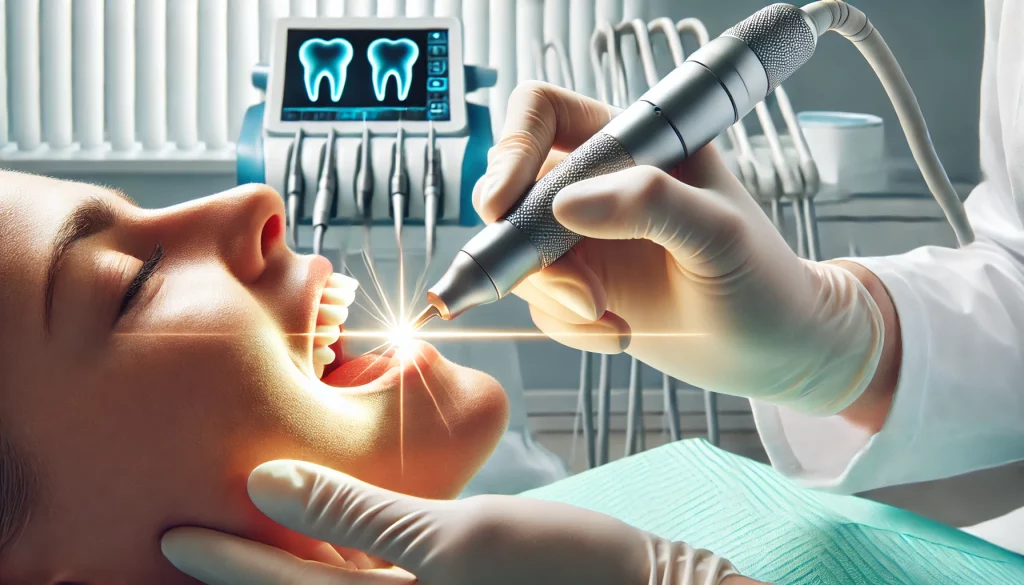
6. Misconception #5: Laser Treatments Are Only for Cosmetic Dentistry
Laser technology is often associated with cosmetic dentistry due to its ability to reshape gums or whiten teeth. Some patients believe that lasers are only appropriate for aesthetic procedures, rather than being part of essential oral health treatments.
The Truth:
Lasers are not just for cosmetic dentistry—they are also highly effective for medical dental treatments that improve oral health. Laser dentistry is used to:
- Treat Cavities: Lasers can efficiently remove decayed tissue and prepare teeth for fillings, often without the need for drilling.
- Manage Gum Disease: Lasers can clean infected gums, remove plaque and tartar, and promote healing in cases of periodontal disease.
- Relieve Pain: Lasers can be used to alleviate discomfort caused by oral ulcers or canker sores by stimulating tissue regeneration.
While lasers are widely used in cosmetic dentistry, their benefits extend far beyond aesthetics and can play a key role in improving both function and health.
7. Benefits of Laser Dentistry for Teeth and Gums
Now that we’ve debunked common misconceptions, let’s look at the real benefits of laser dentistry for teeth and gum health:
A. Precision and Minimally Invasive
Laser dentistry allows for highly accurate and minimally invasive procedures. The focused beam of light can target a specific area, leaving surrounding tissue unharmed. This precision results in less discomfort, reduced recovery time, and fewer complications.
B. Faster Recovery
Laser treatments typically promote faster healing due to their ability to sterilize tissues during treatment. With less trauma to the treated area, patients experience less swelling, bleeding, and discomfort, leading to a quicker recovery time.
C. Reduced Risk of Infection
Laser energy can eliminate harmful bacteria and reduce the risk of infection, especially in treatments like gum disease therapy. The laser’s disinfecting properties help promote faster healing and better long-term results.
D. Increased Comfort
The use of lasers often results in less pain during and after the procedure compared to traditional dental methods. For many patients, lasers mean no need for needles, no drilling, and no lengthy recovery.
Conclusion: The Truth About Laser Dentistry
While laser dentistry is a modern and highly effective approach to dental care, it’s important to address the myths and misconceptions that surround it. In reality, laser treatments are safe, precise, and often more comfortable than traditional methods. The truth is that lasers do not harm teeth—in fact, they can help preserve the tooth structure by removing only the affected areas and promoting faster healing.
If you’re considering laser treatment for a dental procedure, rest assured that laser dentistry is a proven, safe, and reliable method for enhancing your oral health. By understanding the benefits and clearing up the misunderstandings, patients can make more informed decisions about their dental care and enjoy the many advantages that laser technology has to offer.

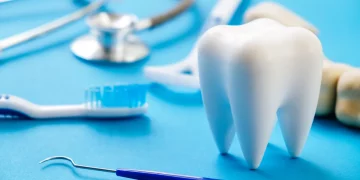





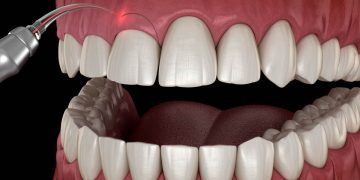
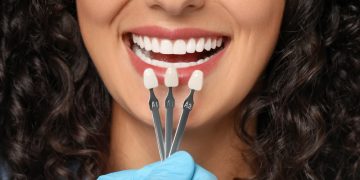
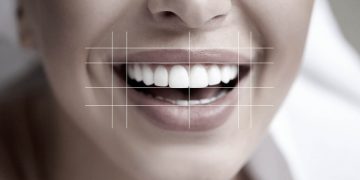

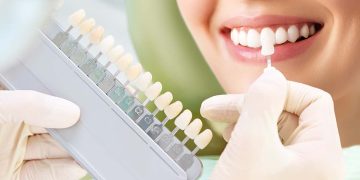




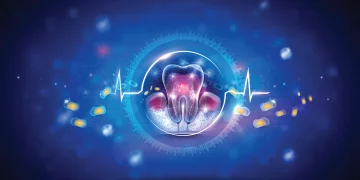








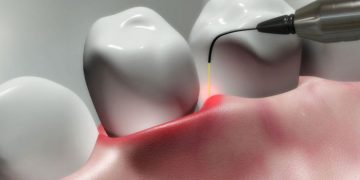




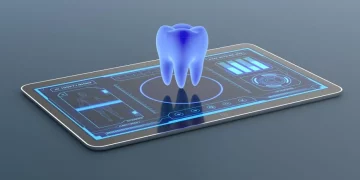
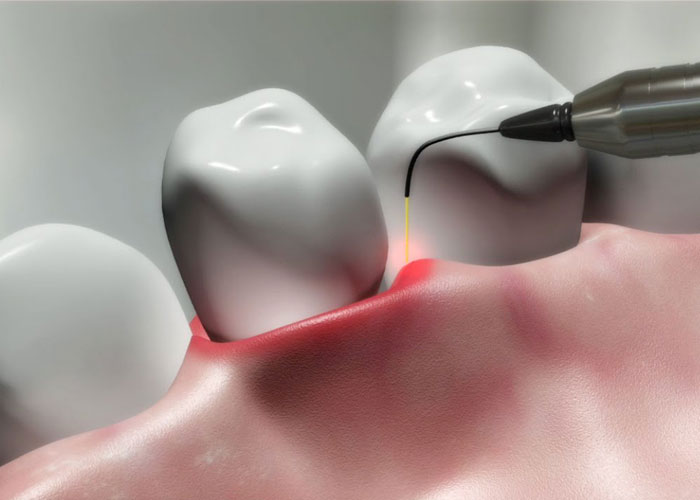













Discussion about this post